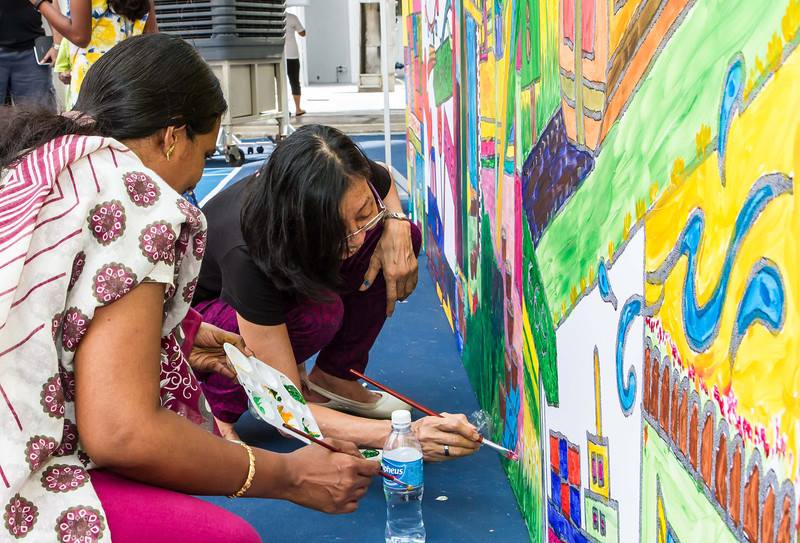
The National Arts Council (NAC) recently announced that voluntary welfare organisations (VWOs) can tap government funding to conduct arts programmes for their beneficiaries. While the NAC should be applauded for making arts accessible to disadvantaged groups, some arts practitioners and VWOs have highlighted the challenges in running such programmes.
These include VWOs’ unfamiliarity with the arts and some performing groups’ worry at being typecast as community arts practitioners. Such concerns are valid, but two issues that could help define the scope and success of these arts programmes are seemingly missing from the discussion so far. First, what constitutes community arts? Second, how can community arts programmes be geared towards benefiting welfare recipients, who come from diverse backgrounds and have a range of different needs?
The NAC adopts a broad, if literal, definition of community arts — that it is an activity for people to come together to participate and enjoy the arts in their neighbourhood.
There are several other interpretations of community arts worldwide. To the Edmonton Small Press Association, a non-profit arts society in Canada championing independent small press initiatives, community arts is a process whereby arts practitioners deliver cultural programmes to the communities they are based in.
Others treat community arts as a means to a greater end. Author Owen Kelly, who has documented the history of community arts in a book, considers it as a platform to effect social change, affect social policies and which encompasses the expression of political action.
These definitions appear to place an undue emphasis on arts programmes taking place within the community. In fact, greater attention should be devoted to the community’s level of ownership and involvement in such programmes, including whether they have been envisioned, executed and enjoyed by members of the community. After all, as the term implies, community arts should be produced in the community and by the community.
Making the Arts Meaningful
Mention “community” and the bonds of friendship and solidarity come to mind. However, sociologists and anthropologists have underlined the difficulty — if not futility — of identifying the distinguishing traits of a community. Moreover, differences such as ethnicity, age, sexual orientation, gender and socio-economic status exist among different groups in Singapore, including those who benefit from VWOs’ assistance.
We should likewise recognise the possible existence of unequal relationships in a collaborative arts project. The artist is a knowledge expert, while most participants are arts novices receiving knowledge and skills from the former. Given this disparity, would non-artists be sensitive about their limited artistic exposure? Would artists be open to the participants’ suggestions, however amateurish their ideas may be? If the participants are satisfied with the final artwork, but it does not meet certain artistic standards, should the artist intervene or resist touching it up?
The unequal interpersonal dynamics might be more palpable in situations where the arts novices come from disadvantaged backgrounds, marked by daily challenges such as chronic health conditions, economic deprivation or social stigma. Hence, administrators running community arts programmes should be mindful of how social inequalities might be reproduced in arts programmes and mar the meaningful participation and enjoyment of their beneficiaries.
An artist friend actively involved in community arts described his role as a “quality controller” — dispensing instructions to the older people and public housing residents participating in his projects and guiding them in producing artworks that met the vision he had conceptualised.
Often, these community members were scouted by the organisations funding the arts projects and their participation was largely confined to helping him create the artwork.
Unfortunately, such an arrangement precludes the participants from being involved in the creative brainstorming stage of the project.
To realise meaningful participation, the community should be involved from the start of a project.
Instead of identifying the artist for collaboration or the art form to be introduced to beneficiaries, VWOs should first engage in conversations with their beneficiaries and listen to their biographies, dreams, passions, needs and difficulties.
Perhaps through dialogue, a gap to their needs and interests might be surfaced and a relevant arts project could be identified.
Meaningful participation in community arts should entail members working alongside the artist in conceptualising and steering the project. It should not be about the mere creation of an artwork under the supervision of the artist or the VWO administrator.
Of course, some participants might prefer a more passive role. Their wishes should be respected.
After all, a community’s needs, experiences and aspirations are less uniform than imagined.
Sim Jui Liang is a research assistant at the Institute of Policy Studies, National University of Singapore, focusing on the arts, culture and media. This article first appeared in TODAY on 1 September 2014.
Top photo from PAssionArts Facebook.
